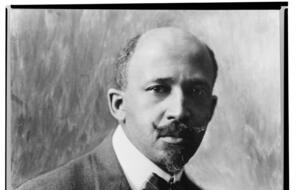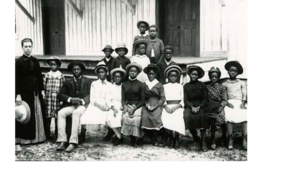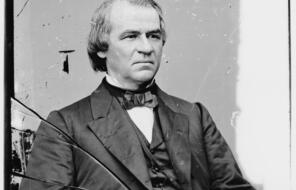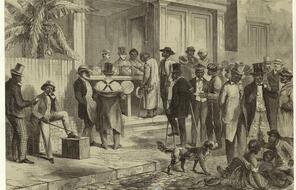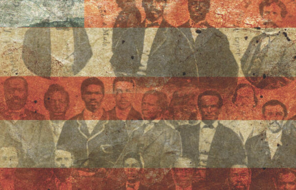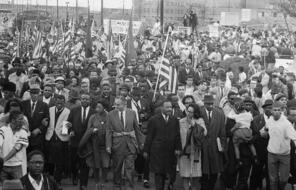Mendez v. Westminster
At a Glance
Language
English — USSubject
- History
- Racism
This is an abridged version of an article was written by journalist Caitlin Yoshiko Kandil and published in the Los Angeles Times.
When Sylvia Mendez was growing up in the 1940s, Orange County, California was largely segregated, according to Gilbert Gonzalez, author of the book “Chicano Education in the Era of Segregation.” Public parks, swimming pools, restaurants and movie theaters were all segregated, and houses were often sold with racially restrict[ive] covenants, stipulating that the property could only be resold to whites.
School segregation first appeared in Orange County in 1919, and by the 1940s, more than 80% of students of Mexican heritage were attending separate schools from whites, said Gonzalez. The so-called Mexican schools were designed to Americanize the students—speaking Spanish was prohibited—and also train boys for industrial work . . . agricultural labor and girls for housekeeping. Then in 1930, a group of Mexican parents in San Diego County organized a boycott and lawsuit against the Lemon Grove School District for forcing their children into segregated schools. The parents won, and the landmark lawsuit became the first successful school desegregation case in US history. But the Lemon Grove Incident . . . didn’t carry legal precedent for the rest of California, so segregation continued elsewhere in the state. . . .
The Mendez family discovered this firsthand in 1944 when they moved to Westminster to lease a farm owned by a Japanese American family who had been put in an internment camp during World War II. The Mendez children, including Sylvia Mendez, attempted to enroll at the nearby 17th Street School but were turned away, while their fair-skinned cousins with the French last name Vidaurri were accepted.
Thinking the school simply made a mistake, Sylvia’s father, Gonzalo Mendez, went to talk with the higher-ups. “He talked to the principal and he said, ‘I’m sorry, Mr. Mendez, we don’t have Mexicans here,’” Sylvia Mendez recalled. “Then he went to the superintendent of schools for Orange County, and he said, ‘Mr. Mendez, four cities, Garden Grove, Santa Ana, Orange and Westminster, have built two schools, one specifically for Mexicans . . . I do not have the power to change it. The cities have decided to do that.’” The Mexican school she and her siblings were forced to attend [was] “terrible,” said Mendez. Besides the two wooden shacks, the books were “hand-me-downs” and the desks were “all falling apart.” An electric fence—which she said shocked one of her classmates—separated the school from a neighboring cow pasture. . . . Gonzalo knew he had to do something. But he didn’t know what until he read about another successful desegregation case in Riverside that challenged the rules barring Mexicans from public parks.
So he hired David Marcus, the Jewish American civil rights attorney who had won the Riverside case, to fight for his children. But Marcus wanted to take it one step further. “Let’s not do this just for your children. Let’s do it for all the children,” Sylvia recalled Marcus telling her father. Gonzalo agreed and drove Marcus around Orange County looking for other plaintiffs who could join him in a class action suit. . . .
The case, which argued that the four segregated school districts violated the 14th Amendment’s guarantee of equal protection, attracted attention outside Orange County. Thurgood Marshall, who at the time was chief counsel for the NAACP Legal Defense and Educational Fund, wrote an amicus brief in support of Mendez. The Japanese American Citizens League, the League of United Latin American Citizens, the American Jewish Congress and the American Civil Liberties Union also lent their support.
In 1946, Mendez won, but as a harbinger of the civil rights movement decades later, the ingrained attitudes would be another battle. Some schools in Orange County started to desegregate. In Westminster, Sylvia Mendez explained, the schools were integrated by placing all of the older children in the Mexican school and the younger children in the white school. “The white people got so upset to see their children in that horrible school, so they went to the superintendent and they closed it down,” she said. Other schools didn’t integrate at all.
The Mendez family moved back to Santa Ana and found that the schools wouldn’t integrate until an appeal of the case was complete. Other schools, Gonzalez said, continued their use of IQ testing as a way to justify keeping Mexican American students separate. Gonzalo pushed back. “My dad went to the superintendent and said, ‘I don’t care what you say, I’m taking my kids to the white school,’” Mendez said. She successfully enrolled at the white school in Santa Ana . . . . A year later, the ruling was upheld in federal court, and within months, California Gov. Earl Warren signed legislation to desegregate schools—becoming the first state in the country to do so. 1
- 1Caitlin Yoshiko Kandil, “Mendez vs. segregation: 70 years later, famed case ‘isn’t just about Mexicans. It’s about everybody coming together’” Los Angeles Times, April 17, 2016.
How to Cite This Reading
Facing History & Ourselves, “Mendez v. Westminster,” last updated July 14, 2020.
This reading contains text not authored by Facing History & Ourselves. See footnotes for source information.







